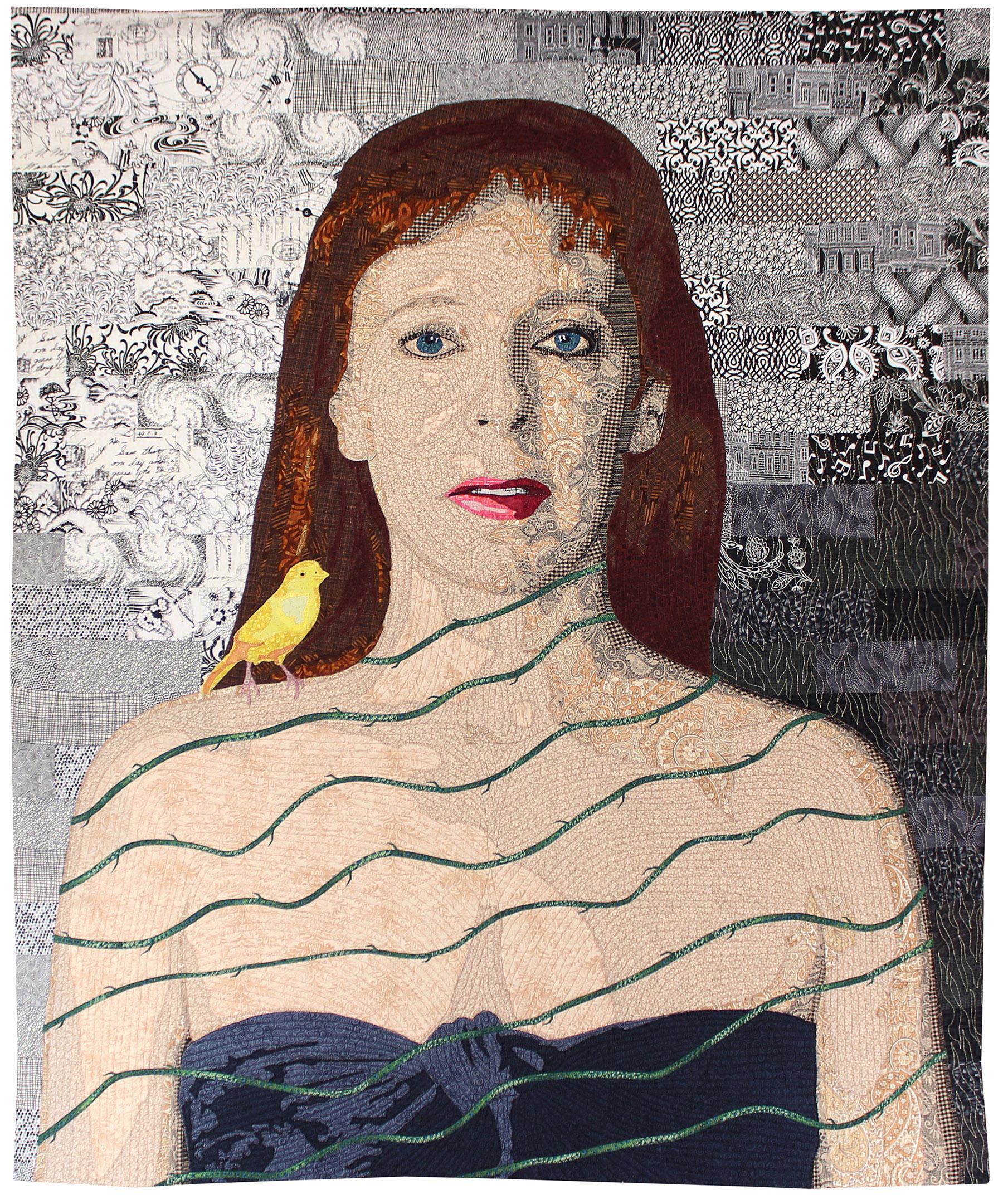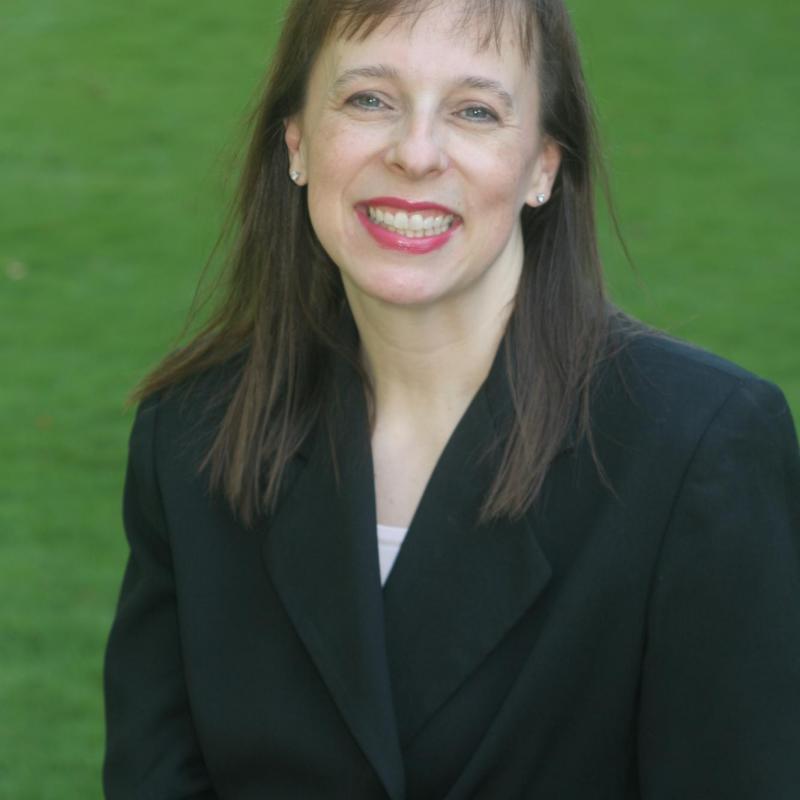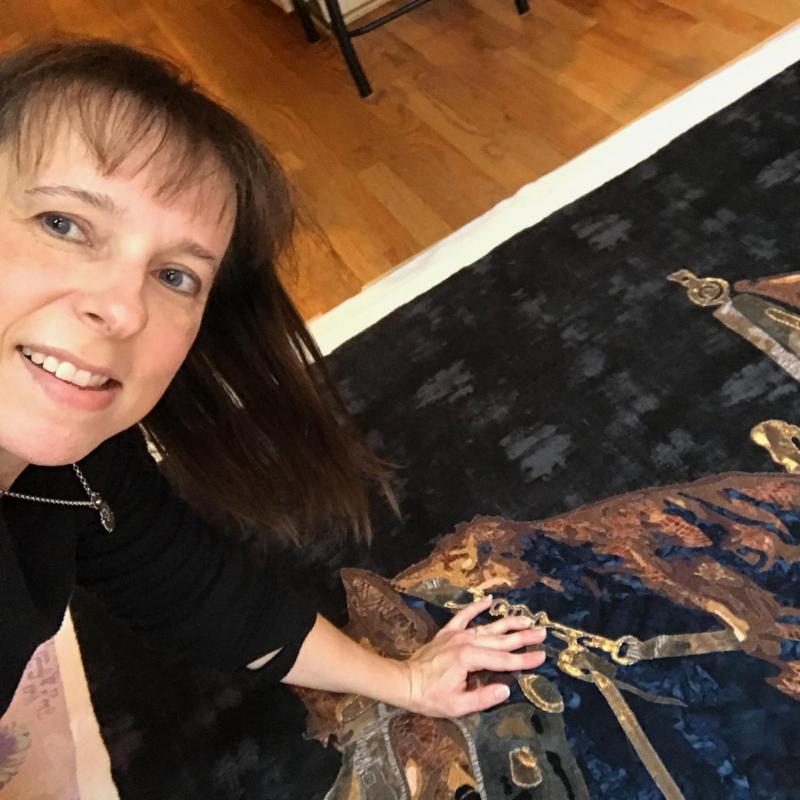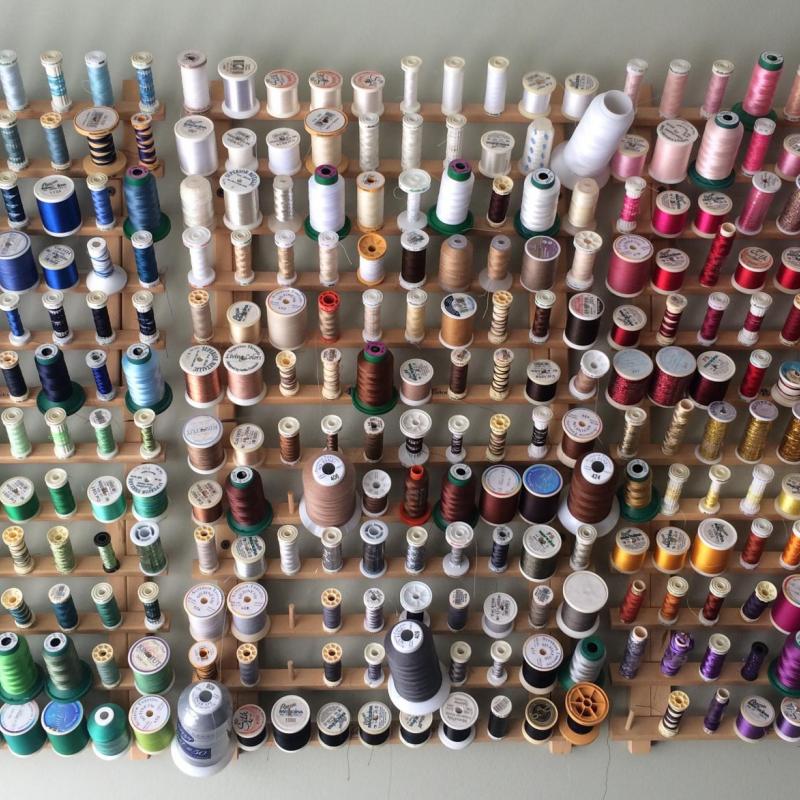Virginia Greaves is one of our participating artists in the SAQA Global Exhibition Beyond the Mirror. Scroll down to find out more about how she was inspired to create her piece "The Canary".

Tell us about the piece you entered in Ebb & Flow/ Beyond the Mirror.
As a portrait artist, sometimes the closest model is yourself, and so one day, I set up my studio to photograph myself. And then when I started making the piece, it became more personal, an expression of several frustrations that I was going through. I was trying to convey the surface facade that all is fine, but underneath, stress and anxiety were strangling me, and the canary on my shoulder is used as a symbol for the difficult journey that I was undertaking.
Why did this theme (Beyond the Mirror) appeal to you?
My piece is essentially a flash in the mirror, showing the actual surface me as well as the interior surface of me.
What do you think someone viewing your quilt might conclude about you?
I think it’s easy to conclude that I have an attention to detail and a desire to reach perfection. I work hard to create realism using printed fabrics, using value as a tool to trick the eye into seeing more than pieces of fabric fused together.
What makes a quilt artistically powerful?
Statement and design. I think the piece needs to find something in the viewer that they can connect with. But design is equally important. The piece has to have a good blend of light and dark values and utilize the principles of color theory to tell your story successfully.
What was your process for creating this piece?
I spent some time taking a good photograph in the studio, and then I took my time picking out my fabrics to make sure the colors and values worked together well. Working from my value study of the photograph, I then cut and fused all the pieces. Once my portrait was done, I embellished the story of the piece with the fused vine, bird, and embroidered thorns. For a background, I cut an array of black & white squares from my stash and pieced them together. The entire piece was free motion quilted on my home machine.
Do you start with a plan, or does your work evolve more organically?
I started with a plan for my portrait, but then I started working more organically, placing the thorned vines around my chest, setting the canary on my shoulder, and creating a background evocative of a dark cave.
How do you decide when a piece is done?
A piece is done when it no longer needs correction to feel complete.
At what age did you begin making art? When did you begin making quilts?
My brother was always the artist. That was his role in our sibling world. But as I grew older and no longer lived in the same home with him, I found a comfort in making art. When my first child was born, I asked for a sewing machine & started quilting. Since I had grown up in my mother’s studio (she’s a landscape painter), it seemed only natural for me to be creating as I raised my children.




